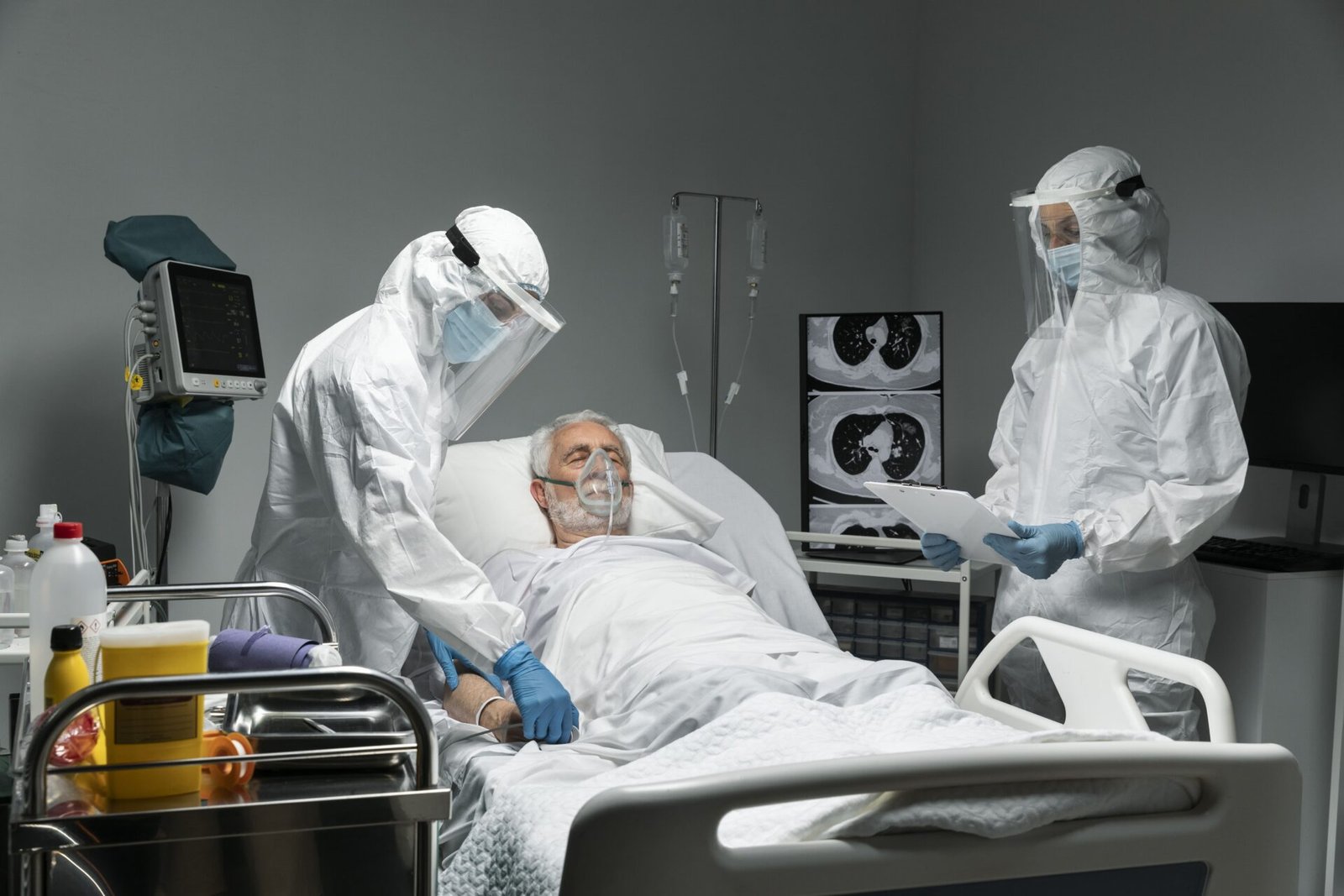Designing an operating room (OR) and post-anesthesia care unit (PACU) with a focus on mitigating biohazard risks requires careful planning and adherence to infection control principles. Here’s a conceptual design that addresses potential biohazards:
Operating Room (OR) Design:
1. Infection Control Measures:
– Implement strict infection control protocols in the OR, including proper hand hygiene stations, availability of personal protective equipment (PPE), and adherence to sterile techniques.
– Designate a dedicated area for donning and doffing PPE to prevent contamination.
2. Ventilation:
– Install high-efficiency particulate air (HEPA) filtration systems to ensure efficient air exchange and removal of airborne contaminants.
– Use laminar flow ventilation systems to maintain a clean airflow pattern within the OR.
3. Surfaces and Materials:
– Choose materials that are easy to clean and disinfect, such as stainless steel surfaces and non-porous flooring.
– Minimize seams and crevices where pathogens can accumulate.
4. Equipment Sterilization:
– Include dedicated spaces for the sterilization and storage of surgical instruments and equipment.
– Ensure compliance with rigorous sterilization and maintenance protocols.
5. Waste Management:
– Design a segregated waste disposal system with clearly marked bins for different types of waste, including biohazardous materials.
– Implement protocols for safe collection, transportation, and disposal of biohazardous waste.
6. Surgical Site Isolation:
– Create a separate, enclosed area within the OR where surgical procedures are conducted to minimize the risk of contamination.
– Maintain strict aseptic techniques within this area.
Post-Anesthesia Care Unit (PACU) Design:
1. Isolation Rooms:
– Include isolation rooms in the PACU for patients with known or suspected infectious diseases.
– These rooms should have negative pressure ventilation to prevent the spread of airborne pathogens.
2. Hand Hygiene Stations:
– Install hand hygiene stations at the entrance and throughout the PACU for staff, patients, and visitors.
– Ensure the availability of alcohol-based hand sanitizers.
3. Patient Zones:
– Designate separate areas within the PACU for patients recovering from different types of surgeries (e.g., clean, contaminated, and isolation areas).
– Implement strict traffic control measures to prevent cross-contamination.
4. Surveillance Systems:
– Install surveillance cameras and monitoring systems to track patient movements and interactions.
– Enable real-time monitoring of patients for signs of infection or distress.
5. Medical Waste Handling:
– Establish a designated area for handling and disposing of medical waste, including biohazardous materials.
– Ensure that waste is properly segregated, packaged, and transported for disposal.
6. Infection Control Training:
– Provide ongoing training and education to PACU staff on infection control measures and the use of PPE.
– Conduct regular drills to practice response to potential biohazard situations.
7. Visitor Policies:
– Develop strict visitor policies, limiting access to the PACU to essential personnel only.
– Visitors should adhere to infection control practices and wear appropriate PPE when allowed.
By incorporating these design considerations into the OR and PACU, healthcare facilities can create a safer environment for patients and healthcare providers, reducing the risk of biohazard exposure and infection transmission. Regular monitoring, maintenance, and staff training are crucial components of effective biohazard management in these clinical settings.

